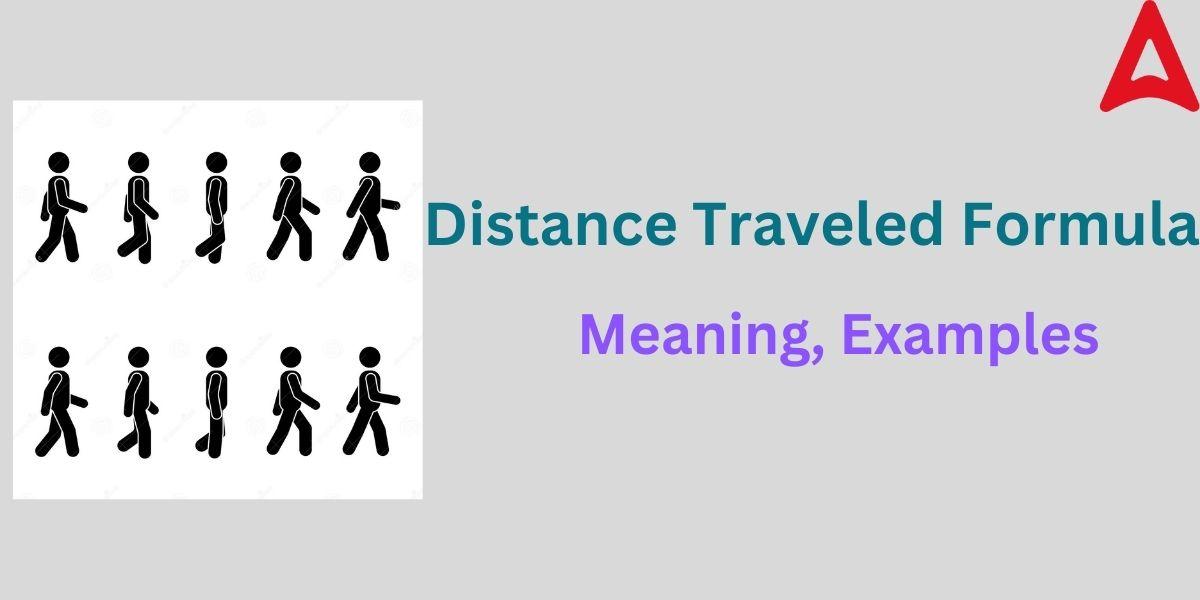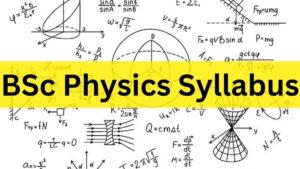Table of Contents
Distance Traveled Formula: All of us travel on a daily basis, whether by vehicle or by foot. When we are going to buy our favorite snack or go for an evening walk, we are basically covering some distance. The same distance concept is available in physics where we deal with various aspects of it. The distance covered by the rocket during its journey into space, the distance between the sun and us, the distance between two planets, etc. are some of the important distances that a physics or mathematics lover may encounter. The distance formula is an important concept in physics as well as mathematics which is used to find many crucial distances of the real world. Let us dive deep into this domain and understand this essential topic.
Distance Traveled Formula
The distance traveled formula is a mathematical expression that is used to calculate the distance traveled by any object. Distance is defined as the path traced by an object in a given time period. It is important to note that there are different formulas for the distance traveled by an object in different scenarios. Calculating the distance an object travels in a specified amount of time can be done using this formula. Physics and mathematics both depend on the idea of distance traveled, which gives us a way to measure how far an object has moved over time. This measurement is essential in a number of disciplines, including physics, engineering, and daily life. Let us have a look at the formula for the distance traveled.
The formula for the the total distance covered by an object is given by:
D = V x T
where, D = total distance traveled
V = velocity at which the object is moving
T = time period
It must be remembered that the above formula is valid only in cases where the velocity with which the object is traveling remains constant during the journey.
Distance Traveled Formula Example
Let us understand this formula with the help of a diagrammatic example. Consider the following diagram.

From the above figure,
Let there be an object which start walking from point R as shown by one of the vertices of the above triangle.
The object covers a triangular distance by covering the path from Q and P to back at R
Here, the total distance will be A + B + C,
where A, B, and C are distances travelled which is represented by three edges of the triangle.
In terms of velocity, the distance will be given by D = V x T
where V = velocity of the object during the journey
T = time period taken to complete the journey.
Distance Traveled Formula with Acceleration
As stated earlier, the above equation holds true only if the velocity remains constant throughout the journey. But what if the velocity is changing during the journey. In that case, we use the distance traveled formula with acceleration. We should know that whenever the velocity of a particular object changes, the concept of acceleration comes into play. Acceleration is basically the rate of change of velocity.
The distance formula with acceleration is expressed as:
D = u x t + (at²)/2
where, u = initial velocity of the object
a = acceleration
t = time period
D = distance traveled
Distance Traveled Formula Velocity
The distance traveled by the object depends on two factors: its velocity and the time period. velocity plays a major role in determining the distance traveled by the object. If the time period is constant, then the velocity of an object becomes directly proportional to the distance covered by it. The distance covered formula modifies if the velocity of an object takes different value at different time intervals. The modified distance traveled formula for such cases is given below:
D = V1T1 + V2T2 + V3T3 + ………………+ VnTn
where, D = total distance covered
V1 = value of velocity during the time period T1
V2 = velocity during the time period T2
and so on
Distance Traveled Formula Calculus
The formula for the total distance traveled by an object can be represented in the calculus form too. This formula is helpful for students in case the distance is given in planar co-ordinates or as a function of time. Let us have a closer look at the distance traveled formula in calculus.
D =
where, D = total distance traveled
dt = time period
v(t) = velocity in terms of t
m = starting position of the object
n = final position of the object
Distance Traveled Formula in nth Second
It is often asked to students to calculate the distance traveled by any object in the nth second. The basic distance covered formula can be tweaked to obtain the distance traveled by the object in the nth second. The distance traveled formula in nth second is given by:
D = V + a(n – 1/2)
where, D = distance covered in the nth second
V = initial velocity
a = acceleration
Distance Traveled Formula for Kids
The distance traveled is associated with motion, as an object cannot travel or cover a distance without being in motion. It is one of the most important chapter in middle school physics. The physics syllabus of the classes 9 to 12 include the simple equation for the distance traveled. The application of force has also been discussed in these classes, which can be easily understood with the concept of acceleration. So one can easily cover the distance traveled formula for middle classes by reading this informative article.
Distance Traveled Formula Based Solved Questions
Below we have mentioned some of the solved examples related to this topic. These solved questions will help students understand this concept in a better way.
Example 1: If the velocity of an object is given to be 10 meter per second, then find the distance traversed by this object in 16 seconds?
Solution: We have been given that Velocity (V) = 10 m/s
time period (T) = 16 s
Using the distance traveled formula D= V x T
D = 10 x 16
D = 160 m
so, the distance traveled by the object = 160 meter
Example 2: A vehicle that is fully laden moves at a speed of 4 m/s. Determine the vehicle’s total journey time across a 24-kilometer route.
Solution: We have been given,
velocity (V) = 4 m/s
Total distance traveled (D) = 24 kilometer
we have to find the time period (T)
Using the distance traveled formula D= V x T, and putting the given values
24 km = 4 x T
24 x 1000 m = 4 x T
or, T = (24000)/4
T = 6000 seconds
or, T = 100 minutes or 1 hour 40 minutes
Example 3: The distance traveled by an object is 60 Km in 10 hours. Find its velocity.
Solution: As we know, distance traveled = velocity x time
given, distance traveled = 60 km
so, 60 = velocity x 10
velocity = 60/10
Hence, velocity = 6 km/h






 CBSE Class 12 Physics Viva Questions wit...
CBSE Class 12 Physics Viva Questions wit...
 BSc Physics Syllabus 2025: Check Year Wi...
BSc Physics Syllabus 2025: Check Year Wi...
 Physics Investigatory Project Class 12: ...
Physics Investigatory Project Class 12: ...










